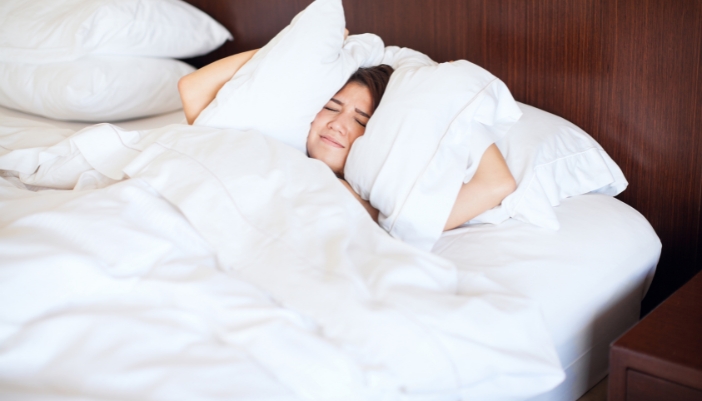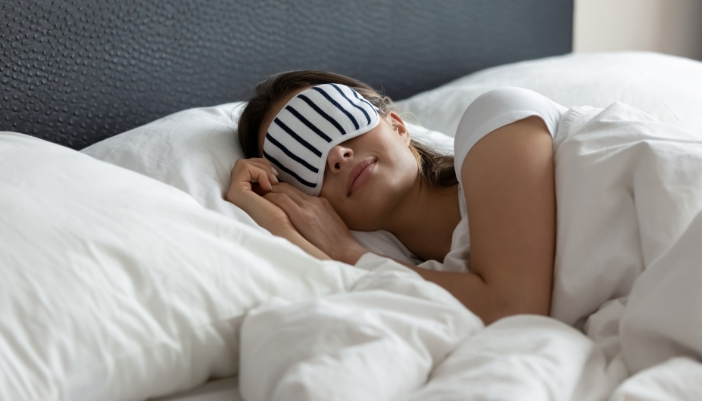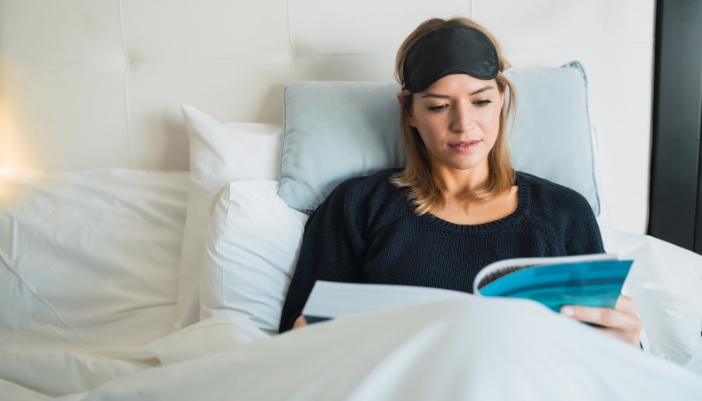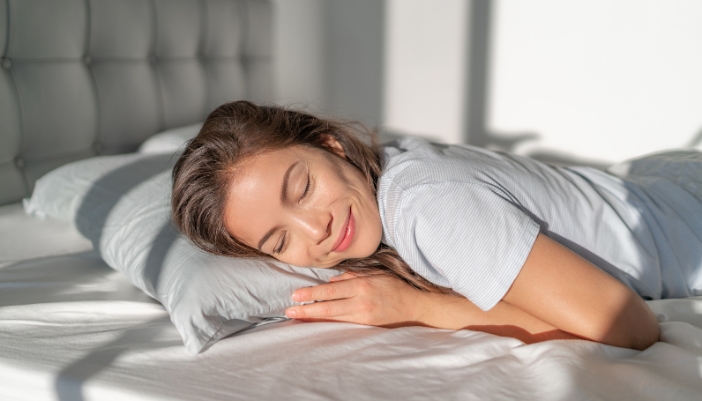Whether you're jet-setting across continents or embarking on a weekend getaway, one thing remains constant – the need for a good night's sleep. But let's face it, sleeping away from the comfort of your own mattress can feel like navigating a minefield of sleep disruptors. Fear not, we’ve got your roadmap to conquering those restless nights. So, pack your bags (and maybe your favorite pillow), and let's embark on a journey to discover the secrets of travel sleep!

Decoding Sleep Disruptors
Traveling, whether for pleasure or business, often brings a sense of excitement and adventure. However, it also presents a unique set of challenges, particularly when it comes to getting a good night's sleep.
- Noise: Unlike the familiar sounds of home, hotels, airplanes, and even relatives' homes can introduce a symphony of unfamiliar noises and disrupt your sleep cycle. Our brains, always alert to new stimuli, may struggle to tune out these unfamiliar sounds, leading to restless nights and groggy mornings.
- Light: Light plays a pivotal role in syncing our sleep-wake cycles. When exposed to too much light, our internal clocks can get confused, making it harder to nod off. This challenge is often amplified in travel settings, where you might not find the same essentials that keep your bedroom at home pitch-dark.
- Temperature: You may not realize it, but temperature can be what makes or breaks a good night’s sleep. Everyone has their own 'Goldilocks Zone' for sleep temperature – not too hot, not too cold. However, while traveling, maintaining this ideal temperature can be tricky.
- Unfamiliar Sleep Environment: There's the simple fact that you're not in your own bed. There's a comfort in sleeping in a familiar environment – your mattress, your pillow, your blankets. When we travel, we're often sleeping in beds that don't quite feel right. This unfamiliarity can subconsciously keep us alert and prevent deep sleep.
By understanding these challenges, we can start to develop strategies to mitigate them, making our travel experiences more restful.

Essential Gear for Sleep-Friendly Travels
Now that we've identified the sleep challenges faced while traveling, let's shift gears and focus on practical solutions. These tips are designed to help you mitigate the disturbances of new environments and enhance your sleep quality, no matter where your travels take you.
- Travel Pillows: A good travel pillow can be a game-changer, especially during long flights or car rides. But it's not just about supporting your neck. Choose a pillow that mimics the feel of your pillow at home. Memory foam, inflatable, or even compact down pillows can provide the comfort and familiarity you need to drift off.
- Eye Masks: These simple, yet effective tools can significantly improve sleep quality by blocking out unwanted light, therefore creating the darkness your body needs to produce melatonin, the sleep hormone. Opt for a mask with a comfortable fit and soft material to avoid any discomfort that might keep you awake.
- Earplugs: These are particularly useful in noisy hotels or when your Airbnb is a bit too close to the nightlife. Earplugs come in various forms – foam, silicone, or even wax. Test a few types before your trip to find what's most comfortable for you. Reducing ambient noise will not only help you fall asleep faster but also maintain a deeper sleep.
- White Noise Machine: These devices can be particularly beneficial for those who rely on a consistent sound environment to sleep. Portable white noise machines can mask disruptive noises with soothing sounds like rainfall, ocean waves, or simple static.
By incorporating these tips into your travel routine, you can create a more conducive sleep environment, even when you're away from the comfort of your own mattress.

Keeping Your Sleep Cycle in Tune While Traveling
Maintaining a consistent sleep routine is crucial for quality rest, especially when traveling. Our bodies thrive on regularity, and keeping a consistent sleep schedule helps regulate our internal clock, or circadian rhythm.
- Stick to a Regular Sleep Routine: Even when you're in a different time zone or have a packed travel itinerary, try to go to bed and wake up at the same times you do at home. This consistency signals to your body when it's time to wind down and when to gear up for a new day.
- Adjusting to Different Time Zones: To ease the transition, start adjusting your schedule a few days before your trip. Gradually shift your sleeping and eating times closer to those of your destination. Once you arrive, try to get exposure to natural light during the day, especially in the morning. This helps reset your internal clock to the new time zone.
- Replicate Pre-Sleep Rituals: Whether it's a warm shower, a cup of herbal tea, or a few minutes of meditation, these rituals can be highly effective in promoting sleep. The familiarity of replicating these routines can provide a sense of comfort and normalcy, helping your mind and body relax even in an unfamiliar environment.
While traveling can disrupt our usual sleep patterns, they don’t have to completely throw you off course and ruin your vacation. Maintaining a consistent sleep routine is key to ensuring restful nights.

Uncovering the Secrets of Sleep-Friendly Spaces
When traveling, sleeping in a different bed offers a fresh perspective on what makes your ideal sleep setting. This experience can be illuminating in understanding your sleep preferences.
- Mattress Comfort: Notice how different mattress types affect your sleep. Do you feel more refreshed or experience discomfort? Did the pillow make a difference?
- Sleep Environment: Assess the impact of room elements like noise, light, and temperature on your sleep quality.
- Routine and Preferences: Reflect on any changes to your usual sleep routine and how they affect your rest.
If you find certain aspects more conducive to a good night's sleep, consider incorporating them into your home setup. This could mean adjusting your mattress, enhancing room ambiance, or modifying your bedtime routine. Your experiences while traveling can be a valuable guide to optimizing your sleep environment at home.
Navigating sleep while traveling doesn't have to be a challenge. With the right approach and a few key items in your suitcase, you can enjoy restful nights wherever your travels take you. From finding the perfect travel pillow to maintaining your sleep routine, these strategies are designed to help you adapt to new environments and keep your sleep cycle on track. As you embark on your next adventure, remember these tips and embrace the comfort of sound sleep, no matter where you are.